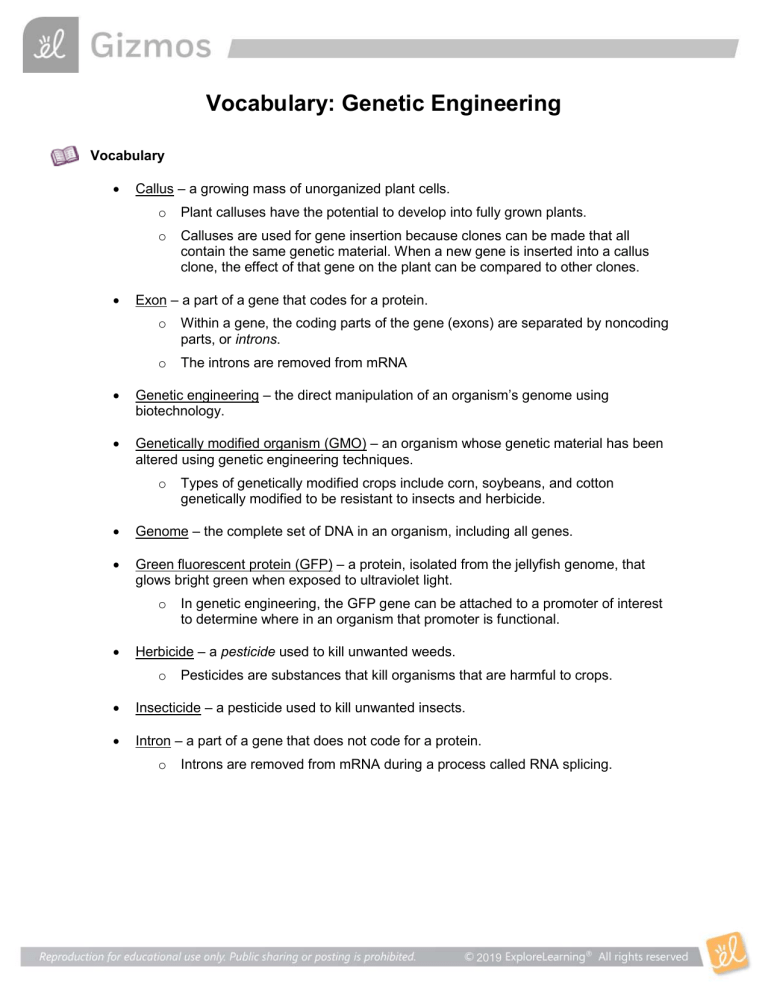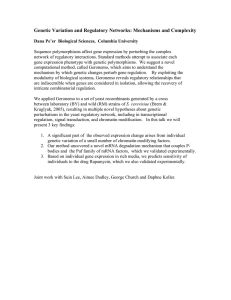
Vocabulary: Genetic Engineering Vocabulary Callus – a growing mass of unorganized plant cells. o Plant calluses have the potential to develop into fully grown plants. o Calluses are used for gene insertion because clones can be made that all contain the same genetic material. When a new gene is inserted into a callus clone, the effect of that gene on the plant can be compared to other clones. Exon – a part of a gene that codes for a protein. o Within a gene, the coding parts of the gene (exons) are separated by noncoding parts, or introns. o The introns are removed from mRNA Genetic engineering – the direct manipulation of an organism’s genome using biotechnology. Genetically modified organism (GMO) – an organism whose genetic material has been altered using genetic engineering techniques. o Types of genetically modified crops include corn, soybeans, and cotton genetically modified to be resistant to insects and herbicide. Genome – the complete set of DNA in an organism, including all genes. Green fluorescent protein (GFP) – a protein, isolated from the jellyfish genome, that glows bright green when exposed to ultraviolet light. o In genetic engineering, the GFP gene can be attached to a promoter of interest to determine where in an organism that promoter is functional. Herbicide – a pesticide used to kill unwanted weeds. o Pesticides are substances that kill organisms that are harmful to crops. Insecticide – a pesticide used to kill unwanted insects. Intron – a part of a gene that does not code for a protein. o Introns are removed from mRNA during a process called RNA splicing. 2019 Promoter – a region of DNA that starts the transcription of a particular gene. o Transcription will eventually lead to protein production or other changes in cellular activity. o Promoters are often species-specific. A bacterial promoter may not work in a corn plant. o Promoters may only be active in certain parts of an organism or at specific times during the life cycle, so one promoter may be active only in the roots of a plant, another only in the leaves, and another only in seedlings. Transcription – the process of forming a nucleic acid by using another molecule as a template. o Transcription starts the process of protein synthesis by using a strand of DNA to form a complementary strand of mRNA. o Transcription is often followed by translation, which uses the mRNA to specify the sequence of amino acids in a protein molecule. Transformation – the uptake of genetic material from the environment by a cell. o In bacteria, transformation occurs when genetic material enters the cell through pores in the cell membrane. o In plants, a bacteria called Agrobacterium tumefaciens can be used to infect plant cells and insert pieces of DNA into the plant’s genome. 2019







